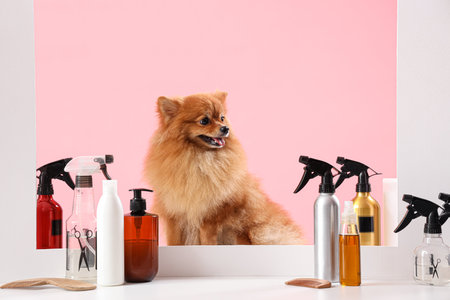Choosing the Ideal Cage
When it comes to providing a safe and comfortable home for your hamster in Britain, choosing the right cage is the crucial first step. Not only does the enclosure need to meet your pet’s needs, but it also has to fit seamlessly into your British household environment. Begin by considering space: while many UK homes may have limited room, it’s important to select a cage that offers at least 80 x 50 cm of unbroken floor area for Syrian hamsters and suitable dimensions for dwarfs. Avoid cages with multiple small levels as these do not substitute for adequate ground space.
Ventilation is another essential factor, particularly given the varying British climate. Wire cages with a deep plastic base are a popular choice, as they allow excellent airflow and make cleaning straightforward. However, ensure that bar spacing is no wider than 1 cm to prevent escapes—a common issue in traditional UK homes with older flooring or gaps. Alternatively, glass tanks or vivariums can be used, provided they have secure mesh lids for air circulation and are kept out of direct sunlight to avoid overheating during rare heatwaves.
In line with UK animal welfare regulations, always opt for non-toxic materials and avoid painted or treated woods that may be harmful if chewed. Many British pet shops stock cages designed specifically for local standards; look for products endorsed by reputable UK animal charities or those carrying RSPCA recommendations. Remember, a well-chosen cage creates the foundation for a hygienic and secure habitat, setting your hamster up for a happy and healthy life within your home.
2. Selecting Safe and Cosy Bedding
When setting up a hygienic and secure habitat for your hamster in Britain, choosing the right bedding is essential. Not only does proper bedding provide comfort and warmth, but it also plays a significant role in maintaining health by absorbing moisture and controlling odours. Let’s explore the best UK-sourced bedding options and practical advice to ensure your hamster’s well-being.
Popular Bedding Types Available in the UK
| Bedding Type | Comfort Level | Absorbency | Safety Notes |
|---|---|---|---|
| Paper-based (e.g., Carefresh, Kaytee Clean & Cozy) | Soft and gentle | Excellent | Virtually dust-free; safe if unscented |
| Aspen Shavings (UK brands) | Moderate | Good | Natural, low dust; avoid cedar/pine due to irritants |
| Hemp Bedding (Aubiose, Hemcore) | Comfortable, slightly firm | Very good | Hypoallergenic, eco-friendly; ensure no additives |
| Tissue Paper/Toilet Roll (plain, unscented) | Very soft (for nesting) | Average | Chemical-free; only use plain white varieties |
Key Considerations for Comfort and Safety
- Avoid Aromatic Woods: Never use pine or cedar shavings as they can release harmful oils causing respiratory issues.
- Select Unscented Products: Scented beddings can irritate a hamster’s sensitive nose and skin. Always opt for unscented options.
- Check for Dust: Excessively dusty bedding may lead to breathing difficulties. Choose brands labelled ‘dust-extracted’ or ‘virtually dust-free’.
- Monitor for Allergies: If you notice sneezing, scratching, or red skin, try switching to a different type of bedding to rule out allergies.
- Avoid Fluffy Bedding: Cotton wool-like materials marketed for hamsters can cause digestive blockages or get tangled around limbs.
Practical Bedding Tips for British Hamster Owners
- Layer Up: Provide at least 15–20cm of bedding to encourage natural burrowing behaviour.
- Nesting Material: Offer shredded plain tissue paper as an additional nesting material—safe and much loved by hamsters!
- Spot Clean Regularly: Remove soiled areas daily to maintain hygiene without disturbing your hamster’s tunnels.
- Sustainable Choices: Hemp and recycled paper are eco-friendly picks that are widely available across UK pet shops and online retailers.
Your Next Step: Prioritise Your Hamster’s Wellbeing!
Selecting suitable bedding is a simple yet powerful way to ensure your hamster enjoys a comfortable, safe, and healthy home environment. By focusing on high-quality UK-sourced materials and steering clear of common irritants, you’re setting the foundation for happy hamster living!

3. Placing the Habitat in Your Home
Choosing the right location for your hamsters habitat is a vital part of ensuring its safety, comfort, and overall well-being. British homes can vary greatly in layout and temperature, so it’s important to consider local factors when positioning your enclosure.
Shielding from Draughts
Hamsters are sensitive to sudden temperature changes, which are common in British houses, especially during colder months. Avoid placing the cage near windows, doors, or anywhere cold air can seep in. Draughty hallways or conservatories should be avoided to prevent your hamster from becoming chilled or stressed.
Avoiding Direct Sunlight
Even on a typical cloudy day in Britain, direct sunlight through a window can quickly overheat a small enclosure. Position the cage away from south-facing windows and conservatories where sun exposure is strongest. Instead, opt for an area with indirect natural light, which mimics a hamster’s natural environment without risking overheating.
Steering Clear of Noisy Areas
Hamsters are nocturnal and need a quiet space during the day to rest. Busy kitchens, sitting rooms with televisions, or children’s play areas can be too stimulating and disruptive. Ideally, choose a low-traffic room where noise levels remain steady—this will help your hamster feel secure and less anxious.
Additional Tips for British Homes
- Keep the habitat off the floor to reduce exposure to cold drafts and curious pets.
- Avoid garages or sheds as these areas often experience greater temperature fluctuations.
- If you live in a flat or shared accommodation, ensure the room remains at a stable temperature (around 18-22°C) and is free from cigarette smoke or strong cooking odours.
Summary
By carefully selecting a safe, calm spot in your home—away from draughts, direct sunlight, and household noise—you’ll create an ideal environment for your hamster to thrive. Remember: a thoughtful location is just as important as the habitat itself when it comes to your pet’s health and happiness.
4. Essential Enrichment and Accessories
Providing your hamster with the right enrichment and accessories is key to ensuring a happy, healthy pet. In Britain, there’s a wonderful variety of locally available toys, tunnels, and habitat additions designed for hamsters, each catering to their instinctive need for exploration and exercise. Let’s look at practical ways you can enhance your hamster’s environment using UK-sourced options.
Why Enrichment Matters
Hamsters are naturally curious and active creatures. Without sufficient mental stimulation and physical activity, they can become bored or stressed, which may lead to unwanted behaviours such as bar chewing or excessive sleeping. By offering diverse forms of enrichment, you’re supporting both their wellbeing and natural instincts.
Top UK-Available Accessories for Enrichment
| Accessory Type | Popular British Brands/Options | Enrichment Benefit |
|---|---|---|
| Tunnels & Tubes | Pets at Home Cardboard Tubes, Rosewood Naturals Carrot Cottage Tunnel | Encourages burrowing and exploration; mimics wild habitats |
| Exercise Wheels | Savic Rolly Wheel, Trixie Wooden Wheel | Supports daily exercise; prevents obesity |
| Chew Toys | Burgess Excel Gnaw Sticks, Boredom Breaker Chew Toys | Promotes dental health; alleviates boredom |
| Hideouts & Nests | Pets at Home Wooden Hideaway, Wilko Small Animal Igloo | Offers security; encourages nesting behaviour |
| Foraging Toys | Naturals Treat Maze, Rosewood Boredom Breaker Puzzle Toy | Mental stimulation; encourages natural foraging instincts |
Tips for Accessorising a British Hamster Habitat
- Select safe materials: Choose wooden or cardboard items free from toxic finishes. Avoid plastic pieces that might be gnawed apart.
- Rotate toys regularly: Swap out accessories every week or two to keep your hamster interested and stimulated.
- Create multi-level layouts: Use platforms and bridges (widely available in UK pet shops) to add vertical interest and encourage climbing.
- Add locally-sourced treats: Scatter small amounts of fresh vegetables or dried herbs as part of puzzle feeders or forage trays.
- Avoid overcrowding: Ensure there’s open space for running alongside enrichment items so your hamster doesn’t feel cramped.
Final Thoughts on British Hamster Enrichment
Caring for a hamster in Britain means you have access to an excellent range of enrichment products tailored for small pets. Prioritise quality over quantity—well-chosen accessories from reputable local brands will encourage both physical activity and mental engagement. Remember, the goal is to mimic your hamster’s natural environment as much as possible while ensuring everything remains clean and safe. Rotate items, observe your pet’s preferences, and enjoy watching their playful personalities shine!
5. Maintaining Cleanliness and Hygiene
Step-by-Step Cleaning Routines for British Hamster Owners
Keeping your hamster’s habitat fresh and hygienic is essential for both your pet’s wellbeing and maintaining a tidy British home. Begin by establishing a regular cleaning schedule—ideally, spot-clean daily and conduct a thorough clean once a week. Remove soiled bedding, leftover food, and any waste each day. Weekly, transfer your hamster to a secure temporary enclosure, then dismantle the cage components.
Disposing of Waste Responsibly
In line with UK environmental standards, dispose of used bedding and waste in biodegradable bags before placing them in your household rubbish bin. If you compost at home, only add natural, paper-based bedding free from synthetic materials. Always check with local council guidelines for animal waste disposal to ensure compliance with British regulations.
Deep Cleaning for a Fresh Habitat
Clean the base and accessories with warm water and pet-safe disinfectant, thoroughly rinsing away any residues to avoid harming your hamster. Dry all surfaces completely before reassembling the habitat. Replace with fresh bedding and return enrichment items such as wheels or tunnels. This routine not only supports your hamster’s health but also helps maintain the high standards of cleanliness expected in British households.
6. Ensuring Security and Escape Prevention
Hamsters are renowned for their intelligence and persistence, making secure housing a top priority for every British pet owner. To keep your furry friend safe, always choose an enclosure with a robust locking mechanism—wire cages should have tight bar spacing (no wider than 1cm) and sturdy doors that snap firmly shut. For plastic or glass habitats, check that lids fit snugly and cannot be nudged open by a determined hamster.
Inspecting for Weak Points
Regularly inspect all parts of the enclosure for signs of wear or damage, especially at joins, corners, and moving parts like doors or lids. Hamsters are notorious chewers and will exploit any weakness, so promptly repair or replace any compromised components.
Daily Checks Are Essential
Make it a habit to perform quick daily checks for potential escape routes. Look for bent bars, loose fittings, or gaps around tubes and attachments. In multi-level setups, ensure ramps and platforms are securely anchored.
Location Matters
Place the cage away from shelves, wires, or furniture that could aid a runaway hamster if they manage to escape. Keep the habitat on a stable surface to prevent accidental knocks or falls.
British Considerations
In the UK’s variable climate, ensure windows are closed and radiators are guarded to prevent both escapes and injury. Remember, a little vigilance goes a long way—your hamster’s security depends on your attention to detail!


